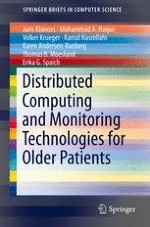This book summarizes various approaches for the automatic detection of health threats to older patients at home living alone. The text begins by briefly describing those who would most benefit from healthcare supervision. The book then summarizes possible scenarios for monitoring an older patient at home, deriving the common functional requirements for monitoring technology. Next, the work identifies the state of the art of technological monitoring approaches that are practically applicable to geriatric patients. A survey is presented on a range of such interdisciplinary fields as smart homes, telemonitoring, ambient intelligence, ambient assisted living, gerontechnology, and aging-in-place technology. The book discusses relevant experimental studies, highlighting the application of sensor fusion, signal processing and machine learning techniques. Finally, the text discusses future challenges, offering a number of suggestions for further research directions.
